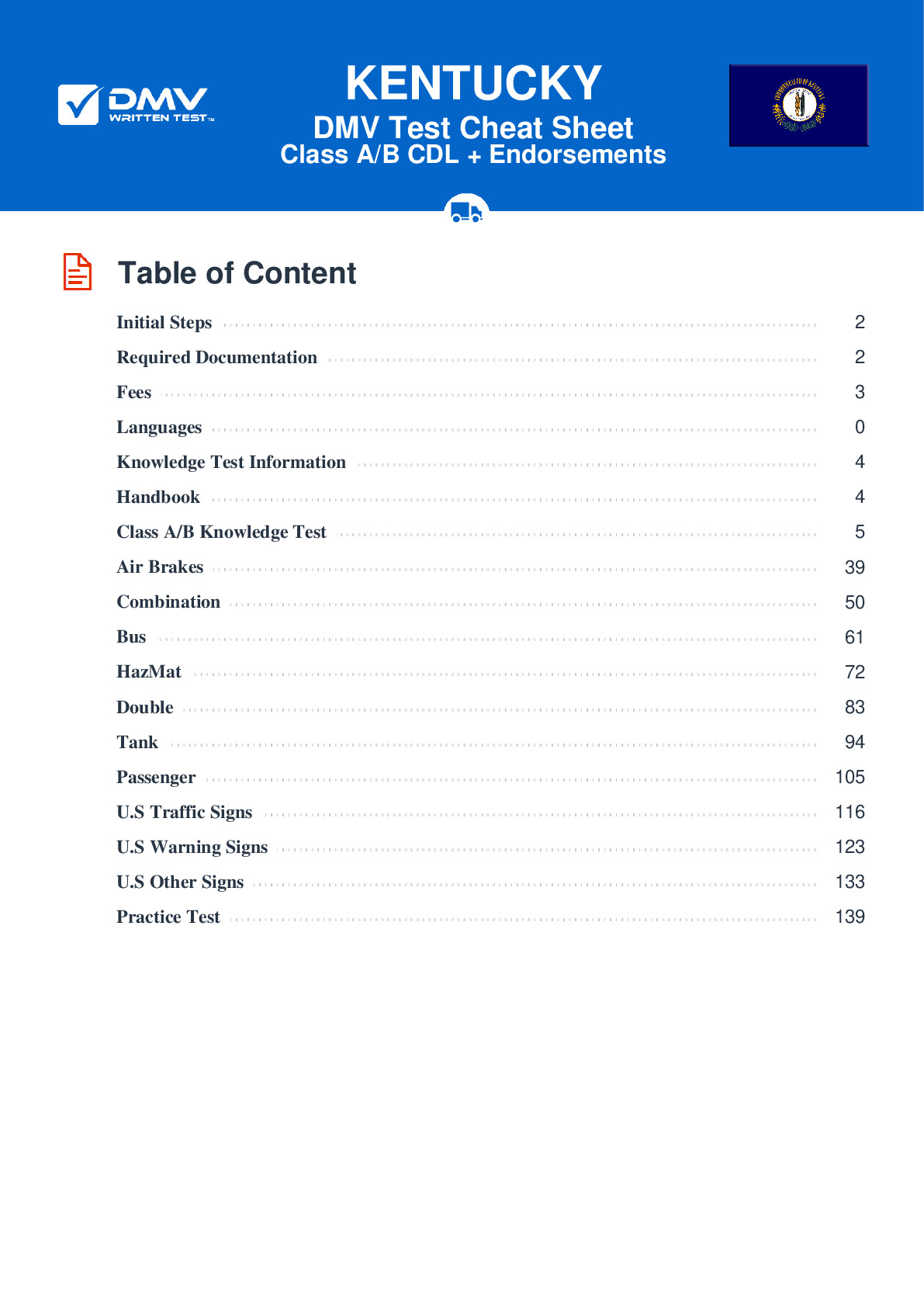Combination
All applicants who are applying for a Class A CDL should be prepared to take the Combination test. This test covers information found in Section 6 of the Commercial Driver License Manual. Section 6 provides the information needed to safely operate tractor-trailers, doubles, triples, and straight trucks with trailers. The test is made up of 20 multiple-choice questions, and applicants will need to correctly answer a minimum of 16 questions to pass. The Combination test is not a replacement for the Double/Triple endorsement test.
Number of Question
Passing Score
1. Trailers built before ____ are not required to have spring brakes.
Explanation
Trailers built before 1975 are not required to have spring brakes. When parking a trailer without spring brakes, be sure to use wheel chocks to prevent the trailer from rolling.
2. If unsure if a trailer has an Anti-Lock Braking System (ABS), you can:
Explanation
If you do not know whether or not a trailer is equipped with ABS, look under the vehicle for the electronic control unit and wheel speed sensor wires coming from the back of the brakes.
3. When you are pulling a trailer, the air supply control lever should be in its ____ position.
Explanation
Tractor protection controls in older vehicles may be operated by levers instead of knobs. If an air supply control is set in its "normal" position, it is properly set for you to pull a trailer.
4. Fully-loaded rigs:
Explanation
Fully-loaded rigs are more vulnerable to rolling over than empty rigs because the weight of the cargo gives the vehicles higher centers of gravity.
5. Rearward amplification refers to:
Explanation
Vehicles with trailers are vulnerable to rollover due to the "crack-the-whip" effect, which is caused by rearward amplification.
6. When driving a vehicle equipped with an Anti-Lock Braking System (ABS), brakes should be applied:
Explanation
When driving a vehicle with ABS, you should brake in the same manner as you would in a vehicle without ABS.
7. When driving with trailers, you should:
Explanation




